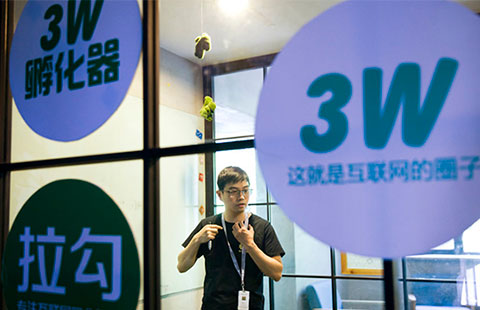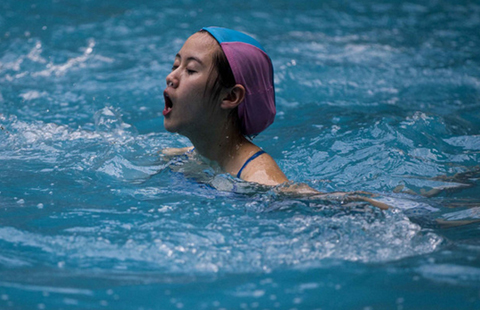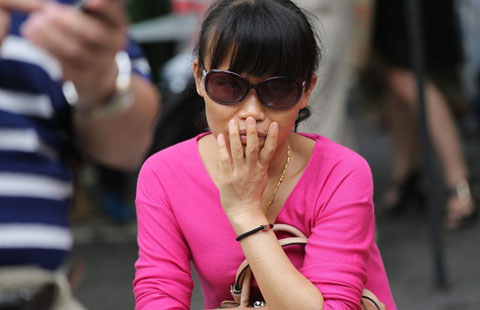3-D technology used in twins' separation
Updated: 2015-06-10 07:39
By Wang Hongyi in Shanghai(China Daily)
|
||||||||
Twelve-week-old conjoined twin girls from Jiangxi province were successfully separated at a Shanghai hospital on Tuesday with the assistance of 3-D printing technology.
Medical checks showed that the girls, weighing a combined 9.55 kg, were connected by soft tissue at the hips. They shared a 10-centimeter anal tube, but had separate digestive systems.
The surgery started at 10:20 am and lasted about five hours.
Pediatric surgery expert Zheng Shan, vice-president of Children's Hospital of Fudan University, who led the surgery, said the operation included body separation, nerve system repairs and anus rebuilding.
Ten doctors, from the neurosurgery, plastic surgery and general surgery departments, participated in the operation.
The hospital pioneered the use of 3-D printing technology in this surgery. It had sent the girls' CT and MRI data information to a 3-D printing company to rebuild the anatomical structure of the conjoined body parts.
"With the 3-D model, we could better understand the actual anatomical structure of the twin girls' conjoined parts. And it helped us to decide on a more precise starting point on the body," Zheng said.
Zheng also said the vaginas of the girls are complete, and their perineal parts are fully established, so their childbearing ability will not be affected.
The girls were born on March 17 at a hospital in Ganzhou, Jiangxi province. Their conjoined condition was discovered only after they were delivered. Earlier prenatal checks showed only that they were twins.
The twins were soon taken to Fudan University's children's hospital, which has experience in separating conjoined babies. Since 2000, the hospital has handled separations of four symmetrical conjoined twins and two asymmetric twins.
Doctors said the ideal time for such a surgery is when the twins are three months old and with a weight of about 10 kg, enough for them to endure the surgery and recover.
Doctors also said it might take three days for the girls to get out of danger.
"We have given special attention to some possible complications, such as cerebrospinal fluid leak, which may lead to purulent meningitis and produce life risk," Zheng said.
A charity group donated 200,000 yuan ($32,200) to help pay for the procedure.
The hospital said conjoined twins are rare. Most are connected at the chest and abdomen. Only 18 percent are connected at the hip.
wanghongyi@chinadaily.com.cn
(China Daily 06/10/2015 page5)
- Exhibition displaying anti-Japanese war archives opens to public
- Key IS leader killed in Lebanon
- British PM hails UK-China relations
- Vice-premier promotes food sector ties with Italy
- Myanmar's NLD party leader leaves for her first visit to China
- Vietnam's top party leader expected to visit US next month

 US dollar inspired art to be auctioned at Sotherby
US dollar inspired art to be auctioned at Sotherby
 Coffee shop where Premier Li met entrepreneurs
Coffee shop where Premier Li met entrepreneurs Cavs edge Warriors to take charge of finals
Cavs edge Warriors to take charge of finals
 Work hard, play hard - five ways to shake off exam stress
Work hard, play hard - five ways to shake off exam stress

Six co-investments by Jack Ma and Pony Ma

 Yes, we are waiting for our children
Yes, we are waiting for our children
 Chinese artist to be recognized at International Muse Awards
Chinese artist to be recognized at International Muse Awards
 2015 Apple WWDC kicks off in San Francisco
2015 Apple WWDC kicks off in San Francisco
Most Viewed
Editor's Picks

|

|

|

|

|

|
Today's Top News
G7 'ignores facts over South China Sea'
Obama weighs sending several hundred more US troops to Iraq
MSCI delays including China A shares in benchmark index
7 Chinese gay couples hold wedding ceremony in West Hollywood
New window on China
Prove hacking: experts
Amid tensions, top Chinese brass visiting US
Apple reveals plan to develop all-platform eco-system empire
US Weekly

|

|






